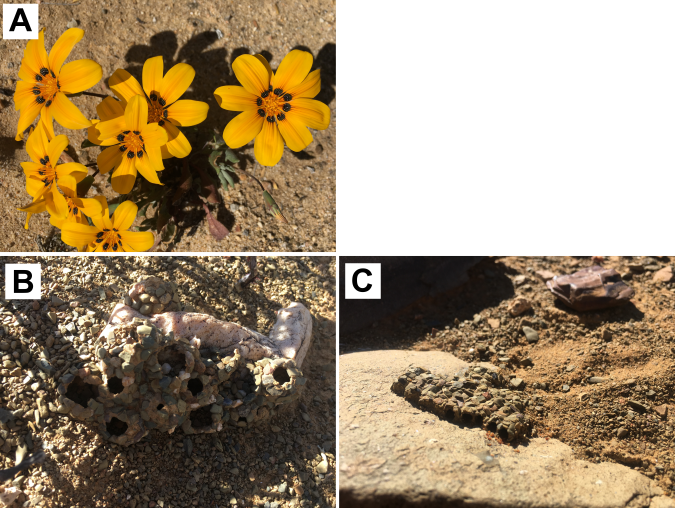Popular article (authored by yours truly) published in the Prince Albert Friend, a community newspaper for the Karoo towns of Prince Albert, Leeu-Gamka, Merweville and Klaarstroom, recording the district’s history since 1912.
An eye in a blue face
Saw an eye in a green face.
‘That eye is like to this eye’
Said the first eye,
‘But in low place,
Not in high place.’
– a riddle by Bilbo Baggins, the protagonist of JRR Tolkien’s best-selling adventure fantasy novel, ‘The Hobbit’. Can you guess the nature of the “eyes” to which Bilbo is referring?
Spring is upon us, and with it comes a vibrant floral display. While you gaze at the Gazanias, eye the irises and say hello to the aloes, think about the creatures that pollinate them. Pollination is an extremely important ‘ecosystem service’ (i.e. benefits afforded to humans by healthy and well-functioning ecosystems) provided by pollinators such as bees, ants, beetles, moths, butterflies, and even birds and rodents. In their search for sweet nectar, they transfer pollen from one flower to the next, ensuring that the plants are able to reproduce successfully. However, the pollinators, too, need to settle down and reproduce.
During my field work, I encountered the most delicate, fascinating little structures made from small pieces of gravel stuck together, attached strongly to a larger rock. They were approximately 2 cm in length, some spherical and some cylindrical. After some research and enquiry, I discovered that they were created by solitary bees (i.e. bees that do not have a queen and do not form a hive) and serve as a nest in which the female lays her eggs. Solitary bees are tremendously important pollinators in the area, and can be seen (and heard!) quite easily in most places with natural veld in Prince Albert, such as Wolwekraal Nature Reserve. Finding their nests is a bit trickier, but easy enough if you’ve seen them before.
As spring settles in, many of us who enjoy being in nature will explore the veld and admire the colourful flowers with their faces to the sun. Take a few moments to appreciate the complexity of all that you observe: the interconnectedness and webs of nature, the processes involved, and all of the role-players in those processes that keep the system going. And in doing so, understand that you, too, are a role-player in the system.

(A) The bright yellow and orange daisies brightening up the road verges, Gazania lichtensteiniana, and the fascinating (B) spherical and (C) cylindrical gravel nests of solitary bees, which are important pollinators in the Karoo.